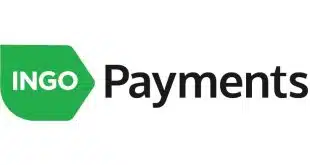If merchants on the one side and bank card issuers and payment card networks on the other were looking for endorsements of their opposing positions about interchange, they didn't get them Thursday when the Government Accountability Office issued a long-awaited report about the controversial fee. The GAO, the investigative arm of Congress, noted the advantages of payment cards for consumers and merchants. It also said interchange fees have increased merchants' costs and that consumers who don't use cards pay them because merchants include card costs in their prices for goods and services. But the options for reducing acceptance costs “pose challenges,” the report says. The GAO outlined the pros and cons of four options but endorsed none. The opposing sides found material in the report to support their positions. “This report confirms what we have been saying about swipe fees for years?that they drive up costs for consumers and are a cash cow for banks,” Mallory Duncan, senior vice president and general counsel of the National Retail Federation, said in a statement. The Electronic Payments Coalition, a lobbying group of card networks and banks, said in an e-mail statement that the report “points out quite strongly that consumers could be harmed if Congress were to act to lower interchange fees for merchants.” MasterCard Inc. in a statement said the GAO found “card acceptance benefits merchants, including through increased sales, faster and more convenient payment, and lower labor costs.” And Visa Inc., citing an earlier GAO study, said that “for the second time in two years, the GAO has seen no need to call for Congressional intervention to regulate interchange.” Congress, which is considering three bills that would regulate interchange, ordered the GAO to study the issue when it passed the 2009 Credit Card Accountability, Responsibility, and Disclosure Act, which President Obama signed into law last May. Interchange is the acceptance fee set by Visa and MasterCard and charged to merchant acquirers in every bank card transaction. The revenue goes to card issuers, and acquirers typically pass the expense to their merchant clients. Although interchange's share varies by merchant, interchange is far by the largest component of merchants' discount rate, or total card-acceptance cost. Many merchants say card costs have risen to near the top of their expenses. The GAO acknowledged that point in its 65-page report, the result of an exhaustive information-gathering process that included input from federal financial-institution regulators, banks, credit unions, merchants, trade groups, the card networks, economists and officials in other countries such as Australia that have regulated interchange. “Economists at the Federal Reserve estimated that the value of interchange fees paid on Visa and MasterCard credit and debit cards has increased substantially, from about $20 billion in 2002 to approximately $35 billion to [$]45 billion in 2007,” the GAO says. The report also details the increasing complexity of interchange. “According to our analysis, in 1991, Visa and MasterCard each had four standard domestic credit card interchange fee rate categories, but by 2009, Visa had 60 and MasterCard had 243 different rate categories that could be charged to card transactions, although not all of these rates would apply to all merchants,” the GAO said. One reason for the proliferation in rates, the GAO said, is that the networks are trying to attract issuers to their brands by enabling them to generate more transaction revenue. Merchants' higher total card-acceptance costs are the result of increased card usage by consumers and changes in interchange rates, according to the GAO. From 1991 to 2009, 43% of the individual Visa rates and 45% of the MasterCard rates that prevailed in 2009 had been increased since they were introduced, the report says. Forty-five percent of the rates in each network stayed the same, but only 12% of Visa's and 10% of MasterCard's decreased. Interchange on rewards cards, which have grown in numbers in recent years and are a sore point with retailers, has risen by 24% since Visa and MasterCard introduced their current premium card lineups in 2005, the report says, citing Federal Reserve data. Interchange for basic credit cards has stayed roughly the same since then. The GAO assessed four options to address merchants' concerns: –Limit or cap the fees. This would most directly reduce merchants' costs. But, citing the experience of Australia, where the central bank imposed price controls in 2003, there is no hard evidence that savings would flow to consumers. Caps, if set too low, could hurt small issuers that are comparatively more dependent on interchange than large-bank issuers. Issuers also might reduce cardholder rewards and increase fees, all of which could reduce cardholder spending and might even reduce retail spending. –Require the disclosure of interchange fees to consumers. This could reduce merchants' costs if consumers responded by reducing use of high-interchange cards. But many people the GAO interviewed said consumers would simply disregard such disclosures, which likely would confuse many people. And somebody would have to pay for the disclosures. –Ban the card networks and other entities from limiting merchants' ability to discriminate among the different types of cards, or levy a card surcharge. Freed from such long-standing network rules, merchants could steer customers to less-expensive payment forms and increase their bargaining power with networks and issuers. The downside for consumers, however, could be fewer acceptance locations and price gouging in the form of surcharges higher than the discount rates they were meant to offset. Issuers, of course, would see lower revenues, which might force some small banks out of the card business. –Allowing merchants to directly negotiate interchange fees. One bill in the Senate and one in the House would give limited antitrust exemptions to rates negotiated by merchants and issuers. This could reduce acceptance costs if merchants win favorable terms. But the GAO noted that the U.S. Department of Justice frowns on such exemptions, and there are questions as to how small merchants and small issuers without much bargaining clout would benefit. If rates did fall, issuers might try to recover the revenue from their cardholders.
Check Also
QorPay Adds Services From Visa’s Cybersource to Its Payments Menu
QorPay Inc. reported Thursday that it has integrated its payment technology with Visa Inc.’s Cybersource …




